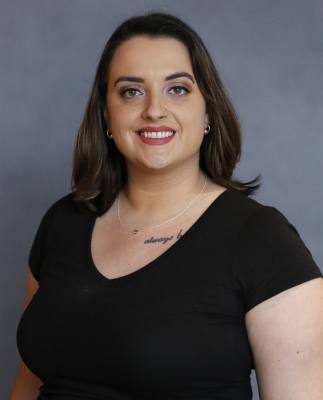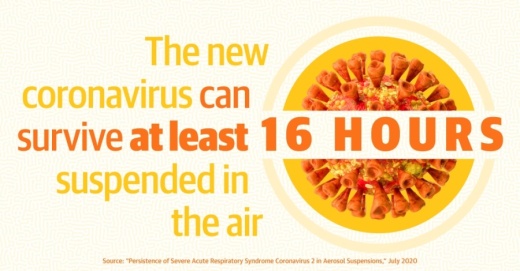Editor's note: This story was updated at 11:45 a.m. July 15 to include a YouTube link to the full panel discussion.
Two infectious disease experts in the Bay Area gave a virtual update on the coronavirus July 14, detailing efforts at the University of Texas Medical Branch to create antibody therapies and conduct clinical trials in the hopes of creating a vaccine and mitigating the spread of the virus.
A paper published in early July by researchers from UTMB Galveston, Tulane University School of Medicine, the University of Pittsburgh and several national public health entities showed evidence that the new coronavirus lasts considerably longer when airborne than previously determined.
While early work showed the airborne virus stayed alive for about three hours, Galveston National Laboratory director Scott Weaver said during the webinar that the new research shows COVID-19 can survive at least 16 hours when suspended in the air in an aerosol. Aerosols are defined as a collection of droplets no bigger than five microns or five one-millionths of a meter.
History of coronaviruses
Coronaviruses are not new to medical professionals, Weaver added—but the recently published paper showed this one survives for longer than previous coronaviruses. In late 2002, an outbreak of respiratory disease caused about 7,000 human infections, starting in China and spreading over the course of six months. This coronavirus outbreak, known as SARS, was over by the early summer of 2003.
“That was really a red flag that we needed to find out more about these coronaviruses,” Weaver said. “Even before 2002 we knew that coronaviruses caused a number of diseases.”
Another known as the MERS coronavirus infected humans, bats and camels in the Middle East in the mid-2010s. MERS did not spread as much from person to person as SARS, Weaver said. Studies were later conducted to identify how coronaviruses replicate and hijack cells and how that leads to diseases in animals.
Before the 2002 SARS outbreak, coronaviruses were thought to typically cause what doctors refer to as the common cold, presenting as mild, flu-like seasonal illnesses. These coronaviruses did not receive much attention, Weaver said, since they were not a serious risk to healthy people.
Another major difference between previous coronaviruses and COVID-19 is the lack of an obvious starting point for the virus, Weaver said.
“There’s really not a smoking gun yet like there was in 2002,” he said. “We still don’t know exactly where this virus came from.”
The first reports of a pulmonary illness came in December 2019 from China, but Weaver said the first cases likely occurred before that. By January, the World Health Organization determined the outbreak was indeed spreading person to person. Since February, evidence has been growing that airborne transmission is essential in the virus’s spread, Weaver said.
During the research process for the paper, the COVID-19 virus was grown in large quantities and taken to an aerobiology facility in Galveston where aerosols were intentionally created to perform experimental infections of animals. The aerosols were tightly controlled, with droplets put into special chambers that were monitored over time to see how long the virus survived.
The conclusions drawn in the process added to growing evidence that airborne transmission of the virus is why it is spreading so efficiently, Weaver said.
“We really need to take ... measures to limit the density of people, to keep them wearing masks when they’re in risky environments,” he said.
New research shows rapid airborne transmission of COVID-19
The Bay Area Houston Economic Partnership and the Galveston Economic Development Partnership hosted the virtual update for the experts to discuss research efforts as well as the patient care and public health strategies that will help lead local communities out of the pandemic. The infectious disease experts on the call emphasized that social distancing alone is not effective in stopping the virus’s spread, particularly given the new information in the paper.
Susan McLellan, the medical director of the biocontainment patient care unit at UTMB, said that clinicians were making educated guesses about COVID-19 at first, mostly based on knowledge of prior coronaviruses. As new information is learned, recommendations for the public have to change over time, she said.
“This is a situation which we’re learning,” she said. “The information that we're getting now about the persistence of these aerosols ... makes it clear that the just 6 feet away thing doesn’t work.”
McLellan is also involved with clinical COVID-19 vaccine trials. Part of the disease process with the virus, she said, involves an overcompensated immunological response, which is often part of what makes people so sick. Clinical therapies and treatments therefore involve both trying to stop the spread of the virus and trying to deal with the immunological response.
“As far as what the disease looks like, well, it looks pretty awful,” she said, adding that only a small group of COVID-19 patients at UTMB are over 65 years of age. “We have an assortment of people on ventilators who are in their 30s and 40s, and they probably didn’t think of themselves as disposable.”
The virus’s first symptoms are very nonspecific, she said: People describe fatigue, aches and a sore throat, but not shortness of breath or a documented fever. It takes about a week for the patient to have difficulty breathing, at which point they will come to a hospital.
Due to the various regulations around human subjects, clinical trials take months to get underway, she said, emphasizing the importance of starting that process as early as possible.
“Giving humans experimental drugs—or using them in an experimental way, if you’re doing it for research—there are a huge amount of controls and regulations to protect human subjects,” she said.
There is no one effective antibody test, experts say
More than 200 people attended the virtual event, and several asked questions related to antibody testing and its efficacy. McLellan said our bodies make hundreds of antibodies when we get sick, which change sometimes depending on the stage of the disease. It is therefore relatively easy to create a test measuring any antibody, but it is harder to create specific tests for specific antibodies, such as a neutralizing antibody that would actively fight the virus.
Tests came out quickly due to demand, so the Federal Drug Administration approved a lot under emergency authorization, but some are now being retracted, she added.
“There's not great agreement on which may be the best antibody test,” she said.
A neutralizing antibody test is being developed at UTMB and used for clinical trials of vaccines, Weaver said, with the hope for it to become available soon to the general public. The ultimate goal is to produce an antiviral pill for people to take once they are exposed to the virus or have very early symptoms. This pill is still in relatively early trials, he said.
Weaver was also asked about considerations for students and staff during the upcoming school year. It is too early to answer that question, Weaver said, based on the constantly changing nature of the virus, so decisions will depend heavily on each campus’s available space.
“Even if tomorrow were the start of the school year, it would be very difficult to know how or if we could open schools safely,” he said.





